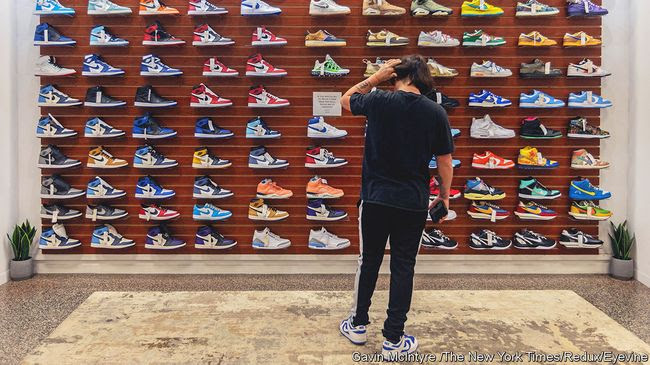7 mistakes organizations make that cause good workers to quit
The decision to leave an organization doesn’t just happen overnight.

Talk to any leader of an organization and they will tell you one of the things that bothers them the most is losing good people. There is a saying that has become very common: “People don’t leave bad jobs, they leave bad bosses.” While many people do leave because of their relationship with the people they directly report to, the reasons are more varied in many cases.
Unhappiness is a main reason employees leave organizations. Yet, what exactly causes people to be unhappy? There are a number of factors that come into the equation that can cause people to conclude they could be better off working somewhere else.
The decision to leave an organization doesn’t just happen overnight. Usually, the conditions have been around for a long time, slowly draining the employee’s enthusiasm and desire to bring their best selves to work every day. As Phil Johnson, founder and CEO of The Master of Business Leadership, says, “The drama, chaos, and conflict experienced in these toxic work environments leads to low levels of employee engagement.”
Here are seven issues that slowly drain a person’s desire to work for an organization:
LACK OF APPRECIATION
People spend a great deal of time at work, and if they get the feeling that they’re not being appreciated, it will slowly drain their energy and desire to give their best. The lack of appreciation can show up in various forms. Lack of recognition for their accomplishments is a key example. When we are working hard, doing good work, and nobody seems to notice, it kills our desire to continue to do more. Another area is lack of caring or taking an interest in our special interests, talents, and life outside of work. When we spend so much time at work, we expect others to take an interest in us as unique individuals, with special talents, needs, struggles, and home situations. And we want the people we report to to support us when we are going through difficult times.
“When employees feel a genuine connection with their leader, their role, and the organization, they are stronger collaborators and communicators, and are more engaged,” explains Debbie Muno, managing director of Genos North America.
UNFAIRNESS AND FAVORITISM
While there are different levels of talent and responsibilities within organizations, we expect the standards for promotions and rules of conduct to be applied equally to employees in the organization. Few things are as upsetting as when organizational rules they’re expected to follow are not adhered to by the higher-ups.
Another sore point that really drains performance is when people perceive that promotions are given based on favoritism rather than meritocracy. The resentment and anger resulting from these actions, or just the perception of them, create a toxic culture that causes good people to leave.
ALLOWING NO AUTONOMY OVER ONE’S WORK
In order to feel fulfilled in our work, we need to have some say in what our work looks like. Whether we have a choice on what we work on, have a say in company goals, or have a say in work-related decisions, we need to have choices to feel fulfilled in our career.
The best work happens when leaders trust us to know what to do and can count on us to do it well. Managers who act as guides and coaches—and are approachable when employees have problems—will see their staff perform much better than those who micromanage and allow their people little discretion over how their work is done.
SHOWING NO INTEREST IN EMPLOYEES’ PASSIONS
Organizations that expect employees to do their jobs without considering what they are passionate about not only miss out on harnessing those passions, but also alienate their people. It takes work, effort, and getting to know people to find out what their passions are. Unfortunately, many workplaces don’t have the desire to find out. As a result, those who believe employees are hired simply to fill a position and should leave their passions at home will find significant turnover among their teams. After some time, these team members will be looking at other companies known for an employee-first culture.
On the other hand, those organizations that do make the effort to find the connections between their people’s work and their passions will see an increase in productivity, higher rates of job satisfaction, and a happier workplace overall. To that end, author Debbie Peterson recommends utilizing psychometric questionnaires. “[These] can ensure employees are in roles where their skills and personalities can shine, and ensure the longevity of the employee and their employment as well as the performance of the organization,” explains Peterson.
ONE-SIZE-FITS-ALL STAFF APPRECIATION
Many organizations have an Employee Appreciation Day once a year when everyone is acknowledged and treated the same. The problem is that not everyone has the same skills, contributes equally, or regularly brings the same effort. Receiving the same recognition as someone who does the least work possible upsets those who go above and beyond, bring extra enthusiasm to their work, and give their best every day.
Not only should people be recognized for their achievements, but they also should be able to communicate how they wish to be recognized. In my book, The Other Kind of Smart, I talk about how important it is to get to know people in order to appreciate them in a way that powerfully connects with them.
A LACK OF MEANING
One thing millennials have become known for is wanting their work to have meaning and to feel that they are making a difference. Previous generations have wanted this as well, but settled for less as they believed the workplace was not the place where this was possible. Now, millennials are a major part of our workplace and are rising to leadership positions. Finally, organizations have started to pay attention.
Organizations must create a vision and share it with their people in a way that ensures everyone understands how their contribution makes a difference. Everyone wants to feel pride in their work and in the organization they work for. This will become increasingly important as younger generations, crucial to an organization’s success, demand this.
A LACK OF FUN AND PLAY
In previous decades, the idea that we should have fun at work would have left leaders aghast. Work was work, and people were expected to have fun outside of the workplace. We have since come to understand that having fun at work is a great way to invigorate people, give them something to look forward to, even alleviate stress and boredom. “For instance, [some] high tech firms now encourage employees to take table tennis breaks,” says Peterson, “with the added benefit that it promotes physical and neurological fitness.”
When people are not only allowed, but encouraged, to have fun in their workplace, they are more relaxed, are able to build camaraderie with their colleagues, and are motivated to perform better.










